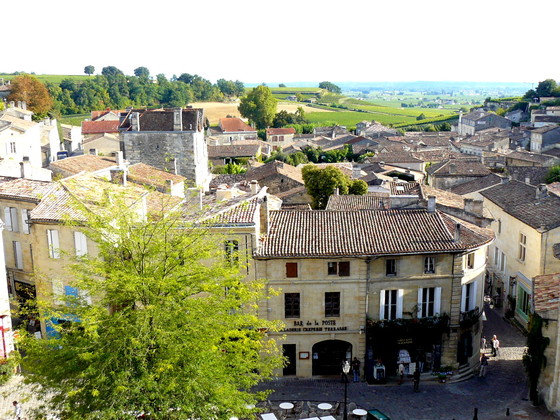 |
| The six wines in my Met Market wine bag |
The deal was straightforward: I'd get a six-bottle wine bag from
Metropolitan Market
and a budget of $150 to fill it up. All I had to do was explain the
reason for my choices to the cameraman. And yes, they'd let me keep the
wine.
So here goes. I pretended I was having friends over for dinner, so
I'd want to start with a festive bubbly. Prosecco prices were well under
$15, Crémant goes for about $20, but Met Market had its own,
private-label
Champagne on sale for $25. K-ching.
A bottle of white to accompany a crab appetizer, perhaps? There's an
impresive, Rhone-style blend from Hedges Cellars, and moderately priced
wines from Barnard Griffin and The Hogue Cellars, but what better
representation of eastern Washington whites than Chateau Ste. Michelle's
2011 Sauvgnon Blanc from its Horse Heaven Hills vineyard. Two down.
Now for the reds. Over on the French side of the display at the
Mercer Street store, there's a good selection of reasonably priced
Bordeaux, but very little classified Burgundy. The better selection of
wines, made in the Burgundian style from pinot noir grapes, are over in
the Northwest section. Two Oregon classics: the
Eyrie Vineyards 2009 and
Adelsheim
2010, both in the mid-$20 range. Full of fresh berry flavors, yet
lighter in body, these wines are ideal companions to grilled salmon.
Moving on to my imaginary barbecued-beef course, I looked for red
blends from eastern Washington. (Could have done French Bordeaux or
Rhone wines, obviously. Could have done Italian reds, Chianti Classico
or Nebbiolo-based. Saved the Barbaresco Proddutori for another day.)
Plenty of big cabs, merlots and syrahs on the Washington shelves, but
dollar-for-dollar, I think there's better value in blends.
First, Brian Carter's "magic" wine,
Abracadabra, blended from more than half a dozen varieties. Second, an excellent blend from Brennon Leighton at Efeste, his
Final-Final
(roughly sixty percent cabernet sauvignon, forty percent syrah). Both
bottles retail in the high $20s, but the Abracadabra is on sale for $16,
$11 off.
All done! Just under $150 with Met Market's 10 percent discount for
six bottles. Once they've finished editing the video, look for it on
this page.
Yes, it can be frightening to approach a supermarket wine section
with hundreds of labels. But Met Market makes it easy; their wine
department managers are very well-trained. Second, it helps if you come
in with guidelines: a grape variety, a region, a winemaker or winery. But be flexible: the more rigid your requirements, the fewer your choices and the more
you'll pay.
Romané-Conti and other grand cru Burgundies are expensive because
they're from teensy vineyards that produce limited quantities of
exceptional wine and are sought-after by connoisseurs all over the
world. There's a lot more First-Growth Bordeaux, but plenty of
"collectors" with more money than taste, often buying case lots as
"investments." Nah, wine shouldn't be considered an investment in
anything but your own pleasure.

















